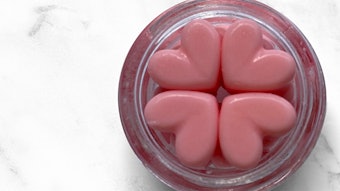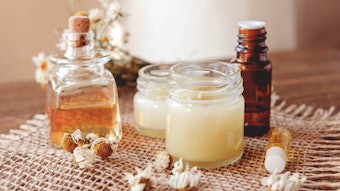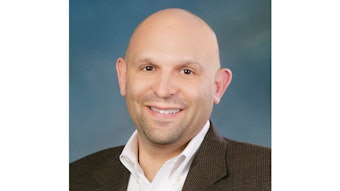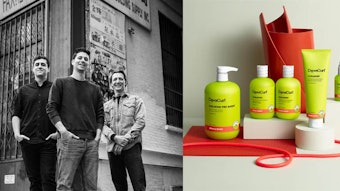After a formula base is developed for a new product, a complementary fragrance must be chosen. This is no easy task. The fragrance must enhance the newly developed formula and reinforce its functionality—the scent should provide a connection and clue as to the function. Similarly, it is not a simple task to create a profile description for the launch of a new designer fragrance. For both fragrance objectives, one must have knowledge of the innumerable fragrance suppliers and their strengths and weaknesses.
In the past, it was up to brand owners to choose whom they would work with in the fragrance process, and suppliers were competing against one another to achieve their best creative efforts. Today, it is almost the reverse—and it’s somewhat of a dilemma for brand owners. In many cases, it is the suppliers who make the decisions of whom they will work with, based on the quantity of fragrance oils projected to be purchased for a given product. The amount of research and development time that will be required of their perfumers and chemists to win the project is another primary consideration.
Once the parameters are set for the product profile and brief by the brand owner, the question becomes to whom to submit the brief. If the project is the creation of a designer cologne, the brand owner should consider the creative perfumery staff of the fragrance supplier. What perfumes has it recently launched? What types of formulas and specialties make up its expertise? Most perfume houses would love to have a major designer launch because it brings status to the fragrance supplier, and it is often the first step in creating a fragrance family tree—with flankers as the offshoots. Take, for example, Chanel No5 and its myriad of offshoots, or Shalimar, a fragrance Guerlain introduced in 1925 and became the starting point of J&J baby powder.
At one time, some fashion houses enjoyed the luxury of their own in-house master perfumer. Take, for example, French fashion houses: Chanel’s Jacques Pulge, Jean Paul Guerlain at Guerlain and Guy Robert at Madame Rochas. Today, a designer, lacking a perfumer, and looking for originality and creativity, may be best served by choosing a larger house to work with due to its myriad of perfumers expert in specific types of scents. In addition, by and large, formulas are now computerized. When a type is requested, the perfumer will work to customize scents in the library to the client’s profile. The fragrance house’s specialty product is what often differentiates a finished creation, and these products, although chemically the same as product available elsewhere, vary slightly due to sourcing, whether its naturally grown or chemically derived, and, thusly, provide a specific character. Many suppliers, too, prefer the formulas to contain a certain percentage of their specialties because it’s a positive addition to profit margin.
All of these factors can influence how a finished goods house chooses to work with different supply houses, even within a fragrance line. For Estée Lauder’s C-Thru teen fragrance line project, IFF handled creation of Ruby, Givaudan Purple Diamond and Firmenich Black Opal. Trudi Loren, vice president, corporate fragrance development worldwide for The Estée Lauder Companies, noted that the three fragrances gave the company room to embrace several personalities to which a broad consumer base could relate.
S.C. Johnson has also embraced a method of working with multiple fragrance houses. For years it has selected from a core list of suppliers, and often allows a wild card to be submitted on any given project. The company uses a number of criteria to judge a supplier wishing to be included on the list. Technical support, compatibilities and worldwide resources are important considerations.
Partnering to Achieve High Tech and Mutual Goals
However, partnering with one supply house to create a product is now becoming more common, as large consumer goods companies realize that they must rely on the technical expertise of the essential oil house with regard to new fragrance applications. Much research is going on to discover both new specialties and how to incorporate them into more functional products. Mane has partnered with Coty to develop Acqua Finish, a new cologne for the Oceans Nautica line using a patented technology from Dow Chemical utilizing a microemulsion system that helps solubilize the fragrance oil without the use of higher levels of alcohol—a big plus in this environmentally aware world. This technology is being used to enhance the ability of fragrance molecules to attach to skin, hair or fabric and give the fragrance a longer life on a medium. Frederic Jacques, vice president of fine fragrance and technology for Mane, feels that sharing resources with clients in a partnership agreement is a natural evolution. “It makes sense to have a natural outlet for the many years of research that our company commits to developing new materials and applications,” he says.
Partnering also occurs when an essential oil house brings a concept or even a personality name to a finished goods house to market a new signature fragrance and work exclusively with that house to develop the fragrance. Recently, Drom partnered with Bill Blass to create Couture 8 and tie in with the fashion house’s spring couture collection. Coty, too, has become a major proponent of partnering, evident in its numerous personality fragrance introductions.
As private label development grows to serve retailers looking to develop their own brands, a symbiotic relationship evolves. No time is wasted in weeding though various supplier submissions to single out potential candidates. The supplier knows that it will get the business, so a more concerted effort will be applied with perfumers and their evaluation staff to achieve what the retailers are seeking. Partnering enables much-needed streamlining and efficiency in a world where time and costs are part of the game, and this is growing in importance. Today’s microwave fragrance market does not often allow for the long creative process of yesteryear.
On the contrary side, the question is whether these type of arrangements limit the possibilities of the small entrepreneurial brand owners that does not quite have the volume of the larger manufacturer. It is still important for the major suppliers to pay attention to creative upstart companies. While some of the smaller independent fragrance houses have focused on these clients, they too are under pressure to conserve their resources. There still must be faith in the creative spirit and potential of the start-up company. After all, Estée Lauder got her start in fragrance with the faith and liaise of IFF. Who knows where the next innovative breakthrough will occur.
Nancy C. Hayden is a chemist and a pharmacist with more than 30 years in the fragrance industry. She worked as a nose for Jovan from the company’s beginnings and as fragrance director for Jovan Beecham until 1988. Currently, she is a consultant to the fragrance and cosmetic industries.










